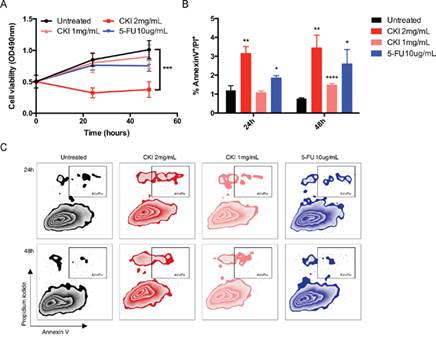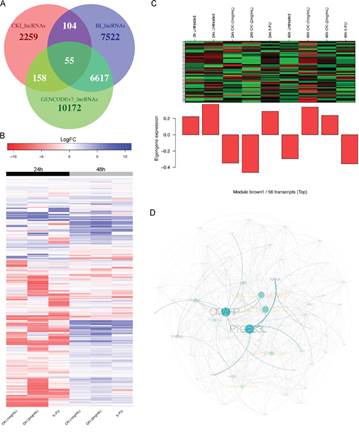


最近,澳大利亚阿得雷德大学和山西中医学院的研究人员,解开了“来自一种传统中药的植物化合物的复杂混合,如何起作用来杀死癌细胞”。相关研究结果发表在《Oncotarget》杂志上,首次描述了传统中药的分子作用,而不是将它分解成其组成部分。
在中国,复方苦参注射液(CKI)被批准用于治疗各种癌症肿瘤,通常用以西医化疗的一种辅助,但它是如何起作用的,我们还不知道。
这项研究的负责人、传统中药分子基础振东澳大利亚 – 中国中心主任David Adelson教授说:“大多数中药都是基于它们在中国数百年或上千年的使用经验。”
“通常有大量的证据表明,这些药物有治疗益处,但并没有了解它们如何以及起作用,为什么起作用。如果我们分解和测试许多传统中药的成分,我们会发现,单个化合物本身并没有太多的活性。多种化合物的组合,可能是有效的,并也意味着很少的副作用。
“这是第一次有研究指出,植物来源的化合物的复杂混合物的分子作用方式,在这项研究中,化合物是运用所谓的系统生物学方法,从两种中药(苦参和白土苓)的根部提取的。这是一种分析复杂生物系统的方法,试图考虑系统的所有可测量方面,而不是专注于一个单一的变量。”
分子传统中药振东澳大利亚中国中心在2012年成立,是阿得雷德大学与中国山西中医学院和振东制药公司携手成立的。该中心是由振东制药公司捐赠设立,旨在了解传统中药是如何发挥作用的,长远目标是融入西方医学。
研究人员利用高通量的新一代测序技术,当将CKI应用于实验室中生长的乳腺癌细胞时,来识别它所靶定的基因和生物通路。Adelson教授说:“我们发现,CKI触发的基因表达模式,可影响与西方化疗相同的通路,但是作用于同一通路中的不同基因。这些基因调节着细胞分裂周期和死亡,并且,CKI改变了细胞周期被调控的方式,以将癌细胞推向细胞死亡途径,从而杀死细胞。”
Adelson教授说,这项技术可以用来分析其他中药的分子机制,可能会打开它们在西方医学中的使用方式。(来源:生物通 王英)
Identification of candidate anti-cancer molecular mechanisms of compound kushen injection using functional genomics
Abstract Compound Kushen Injection (CKI) has been clinically used in China for over 15 years to treat various types of solid tumours. However, because such Traditional Chinese Medicine (TCM) preparations are complex mixtures of plant secondary metabolites, it is essential to explore their underlying molecular mechanisms in a systematic fashion. We have used the MCF-7 human breast cancer cell line as an initialin vitro model to identify CKI induced changes in gene expression. Cells were treated with CKI for 24 and 48 hours at two concentrations (1 and 2 mg/mL total alkaloids), and the effect of CKI on cell proliferation and apoptosis were measured using XTT and Annexin V/Propidium Iodide staining assays respectively. Transcriptome data of cells treated with CKI or 5-Fluorouracil (5-FU) for 24 and 48 hours were subsequently acquired using high-throughput Illumina RNA-seq technology. In this report we show that CKI inhibited MCF-7 cell proliferation and induced apoptosis in a dose-dependent fashion. We integrated and applied a series of transcriptome analysis methods, including gene differential expression analysis, pathway over-representation analysis, de novo identification of long non-coding RNAs (lncRNA) as well as co-expression network reconstruction, to identify candidate anti-cancer molecular mechanisms of CKI. Multiple pathways were perturbed and the cell cycle was identified as the potential primary target pathway of CKI in MCF-7 cells. CKI may also induce apoptosis in MCF-7 cells via a p53 independent mechanism. In addition, we identified novel lncRNAs and showed that many of them might be expressed as a response to CKI treatment.
原文链接:http://www.impactjournals.com/oncotarget/index.php?journal=oncotarget&page=article&op=view&path%5B%5D=11788&path%5B%5D=37312



